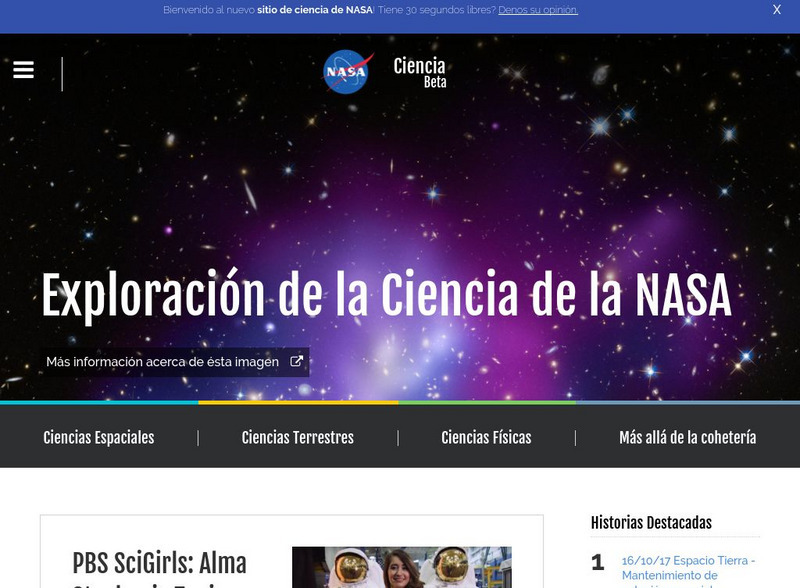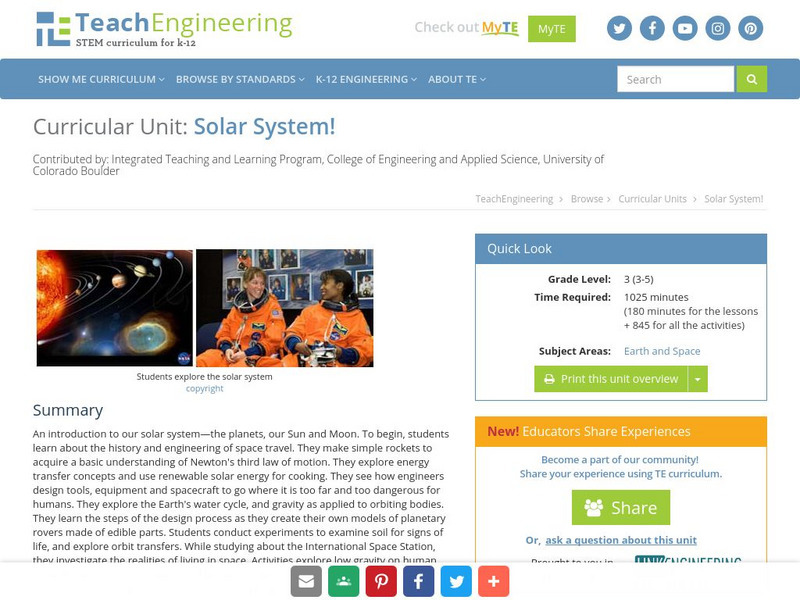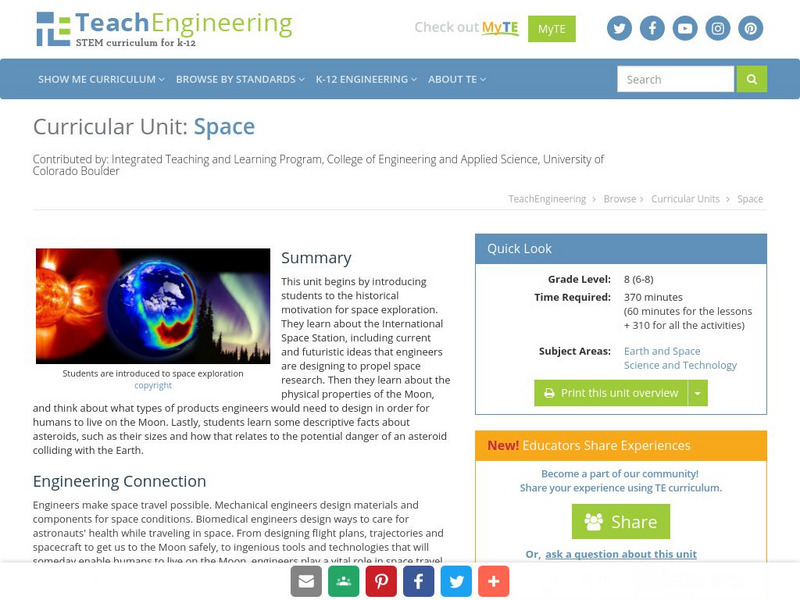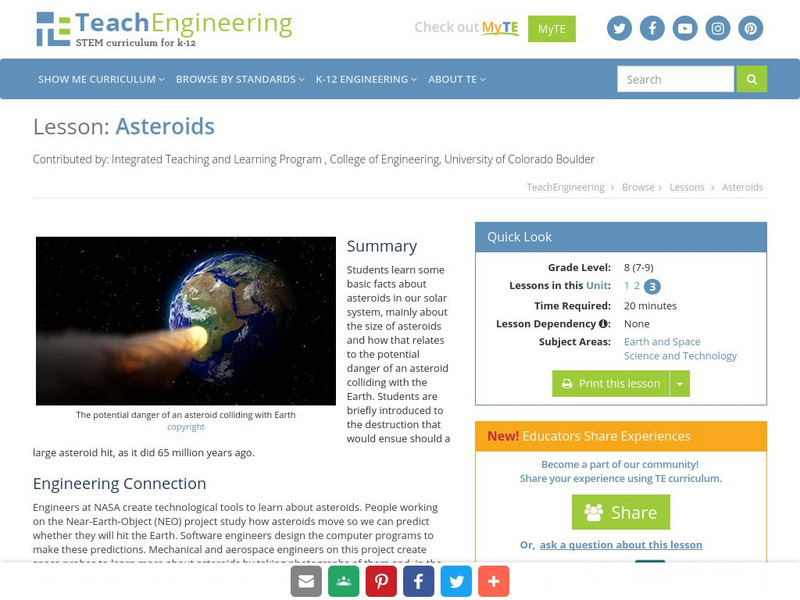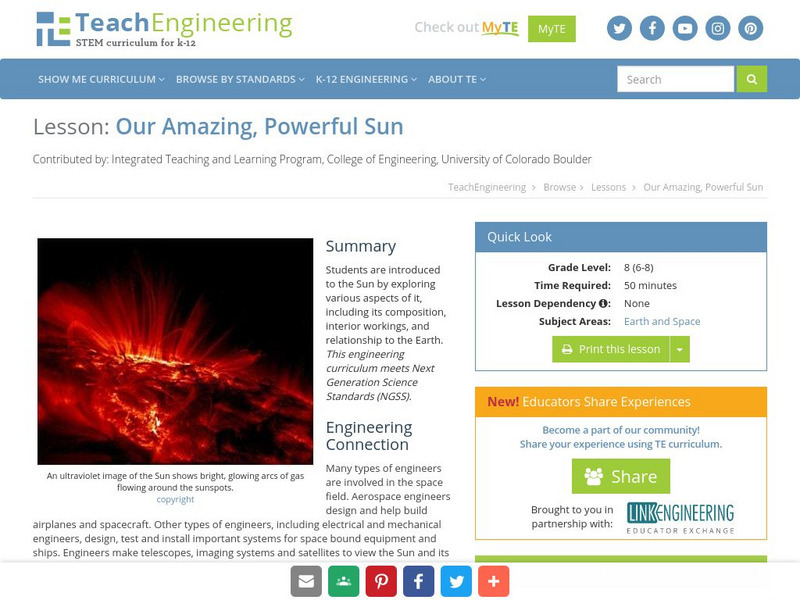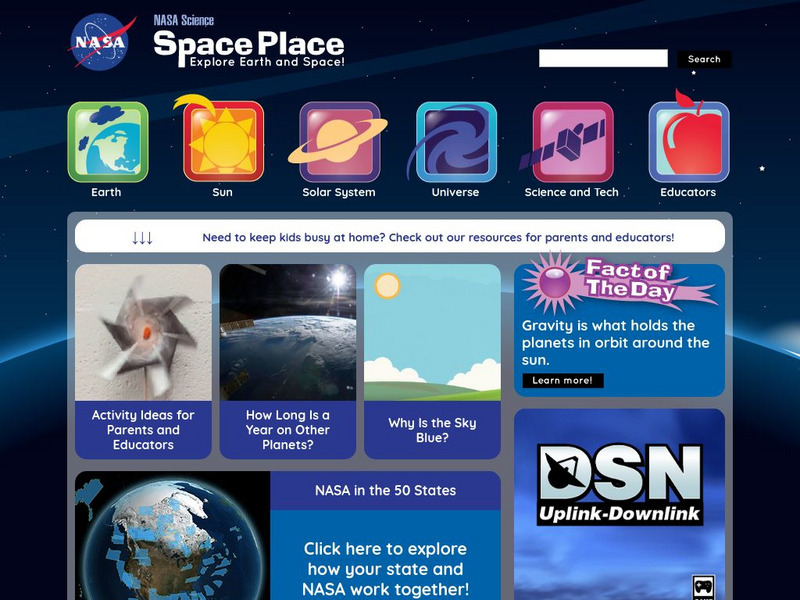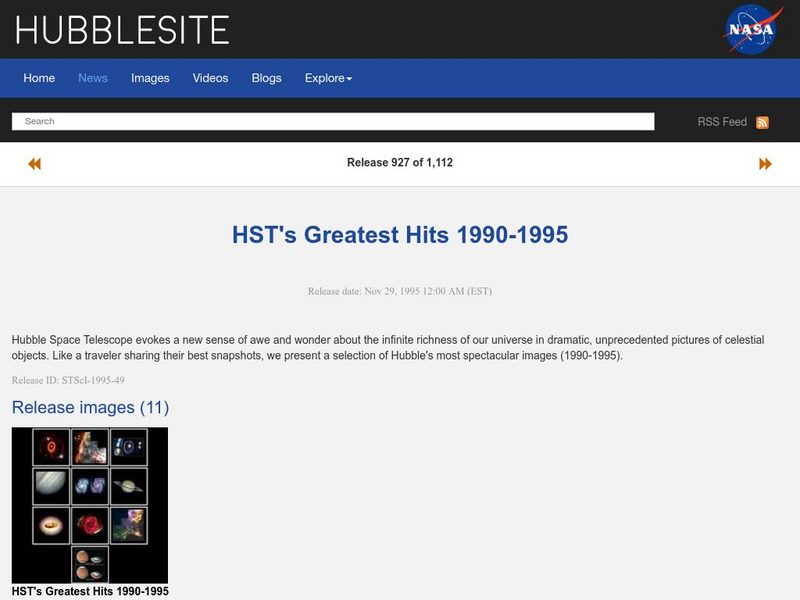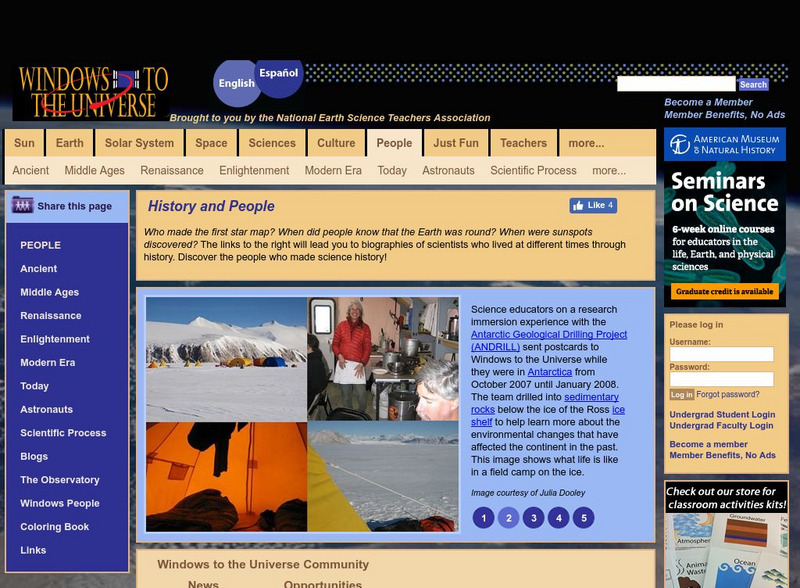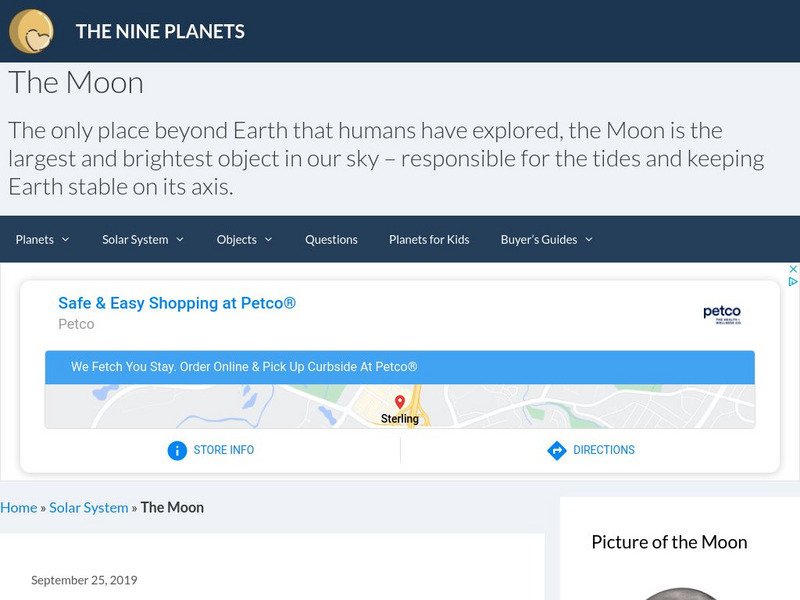NASA
Nasa: The Space Place: What's in the Heart of a Comet?
NASA site explores what a comet's nucleus is composed of. Animation and photographs are provided as well.
NASA
Goddard Education: Eclipse 99
Information is provided about the eclipse of 1999; in addition, facts about elcipses throughout history are also included.
NASA
Nasa: La Historia De Hoy: Today's History (Spanish)
Explore the depths of space and science comprehensive information about the meteor showers in 2004, the transit of Venus, virtual reality, and other interesting science history.
TeachEngineering
Teach Engineering: Solar System!
An introduction to our solar system: the planets, our Sun and our Moon. Students begin by learning the history and engineering of space travel. They make simple rockets to acquire a basic understanding Newton's third law of motion. They...
TeachEngineering
Teach Engineering: Space
In this unit, students first are introduced to the historical motivation for space exploration. They learn about the International Space Station and are introduced to new and futuristic ideas that space engineers are currently working on...
TeachEngineering
Teach Engineering: Asteroids
Students learn some basic facts about asteroids in our solar system, mainly about the size of asteroids and how that relates to the potential danger of an asteroid colliding with the Earth. Students are briefly introduced to the...
TeachEngineering
Teach Engineering: Our Amazing, Powerful Sun
Middle schoolers are introduced to the Sun by exploring various aspects of it, including its composition, interior workings, and relationship to the Earth.
Texas Education Agency
Texas Gateway: The Sun Is the Center of the Solar System
See what you know about the solar system by taking this brief interactive quiz and learning module.
Other
Sea and Sky: A Tour of the Solar System
Take a virtual tour of the solar system starting with detailed information about the sun.
NASA
Nasa: Image Science Center: Ask the Space Scientist
A NASA scientist, Dr. Sten Odenwald, answers many students' questions. Topics include planets, galaxies, black holes, the origin of the universe, and common misconceptions about space.
NASA
Nasa: Star Child: Elementary Astronomy Unit
Learn everything you can about outer space with this interactive astronomy unit. 2 levels of difficulty with modules on the solar system, the universe, other "space stuff" and a glossary of terms. Links for parents and other great website.
Other
Sunaeon: Solar System Scope
Experience the solar system as you've never seen it before; up close and personal. Visit each planet by clicking on it, then selecting the play button to track its rotations through the calendar year. Watch the constellations move...
Space Telescope Science Institute
Hubble Space Photographs: Hst's Greatest Hits 1990 1995
Breathtaking images from the Hubble Space Telescope give a new perspective to our world.
National Earth Science Teachers Association
Windows to the Universe
Windows to the Universe has developed an interactive resource about the earth, space, biological and physical sciences. Content includes information on our planet, the solar system, the universe, myths associated with space, space...
National Earth Science Teachers Association
Windows to the Universe: History & People
Biographies of people throughout history who looked at the sky and wondered what was there. Links to a detailed description of the planets and interactive activities.
Nine Planets
The Nine Planets: The Moon
Explore the mythology, structure, observational history, gravitational force, and orbit of Earth's Moon.
Other
The Astronomy Cafe
NASA scientist Sten Odenwald calls this his "web site for the astronomically disadvantaged." Do you have lots of questions about space that you can't seem to get answers to? Would you like to learn about a career in astronomy, Big Bang...
NASA
Nasa: Mars and Earth: Science Learning Activities for Afterschool
This set of activities teaches learners about the big picture of science using Mars as an example: how to collect data, use evidence, and look at models.
Sophia Learning
Sophia: Space Sciences: Introduction to the Mars Science Laboratory
Created to teach students of the 21st century, SOPHIA is bringing Mars straight to your fingertips. Discover what scientific discoveries are occurring in the rest of the universe with this interactive tutorial.
Sophia Learning
Sophia: The Sun and the Moon Tutorial
Created to teach students of the 21st century, SOPHIA is bringing the sun and the moon straight to your fingertips. Become the commander of your own learning experiences as you take part in this interactive tutorial.
DOGO Media
Dogo News: Week of 10 21 13: Does It Rain Diamonds on Saturn and Jupiter?
Article reports on research that suggests that rain on Saturn and Jupiter may be made of diamonds. Includes a brief video.
NASA
Nasa Star Child:space Probes (Level 1)
This page of NASA's excellent Starchild site deals with Space Probes. Learn about the various planetary probes by clicking on the planet of interest.
BBC
Bbc Schools: Ks2 Bitesize: Science: Physical Processes: Earth, Sun, and Moon
Help Sarah Jane and her team put the solar system's planets back in order. Following the activity, read more about the sun, the Earth, and its moon, and then take a quick quiz to check for understanding.
Crayola
Crayola: Extraterrestrials Visit Earth (Lesson Plan)
Your students will love wrapping up a solar system unit with this activity! Children make their own "Travel brochure," about earth, trying to encourage extraterrestrials to visit, by comparing our planet to theirs. This lesson plan also...




